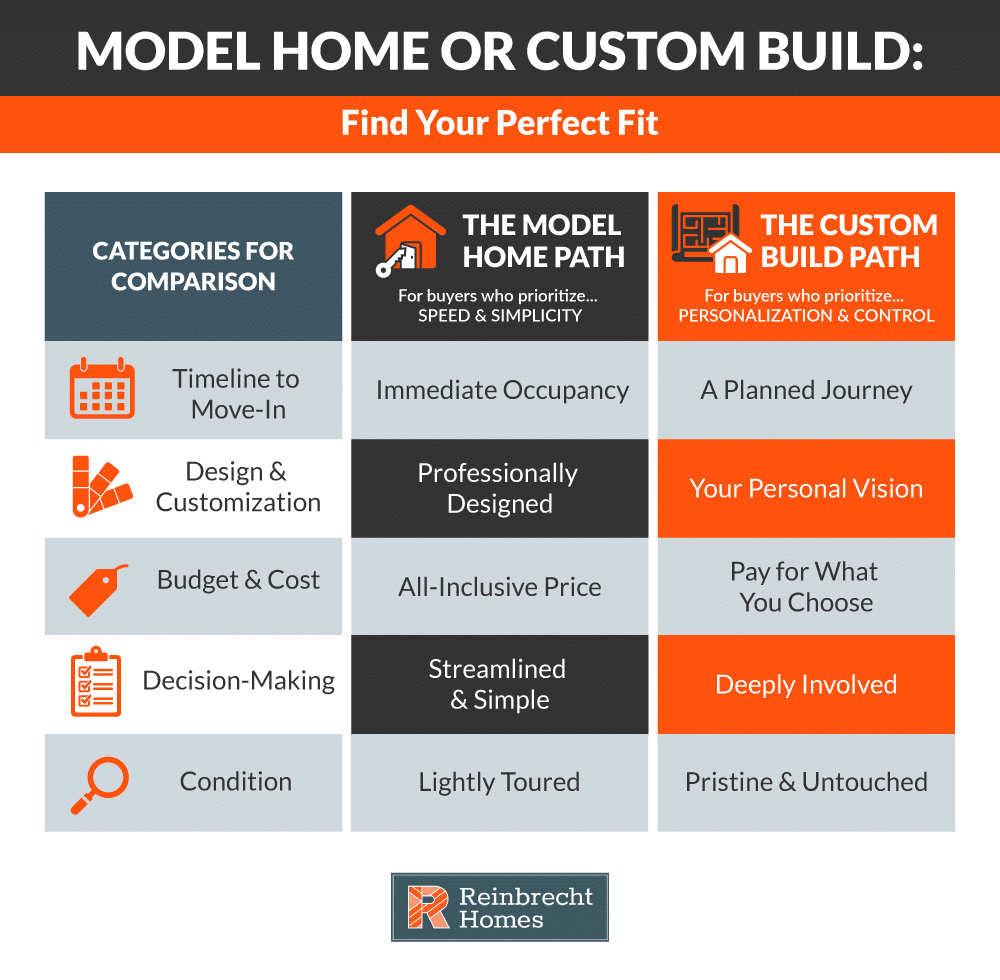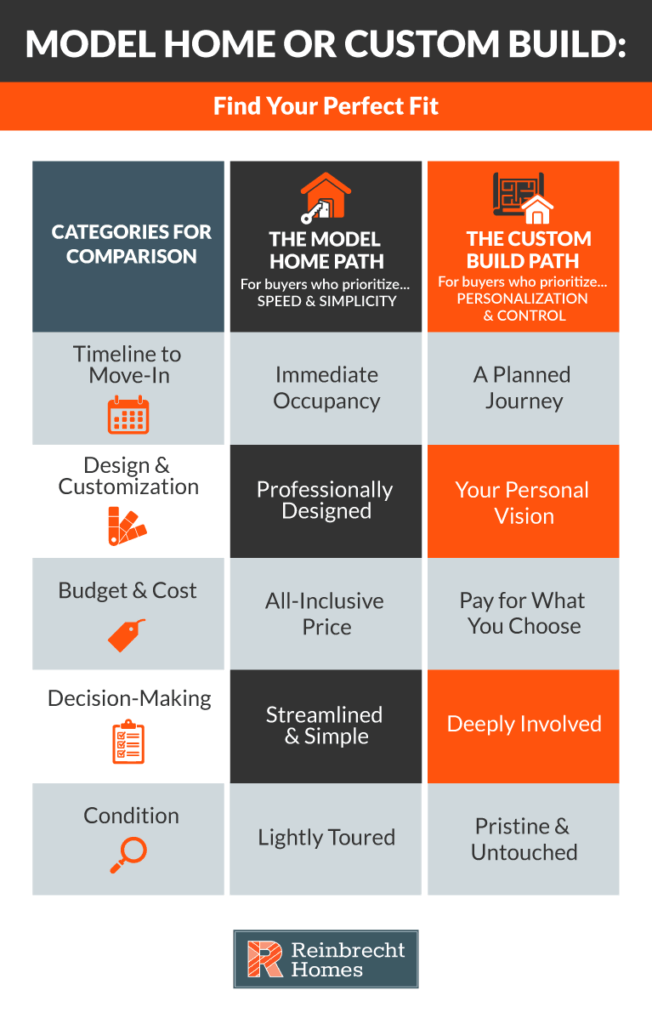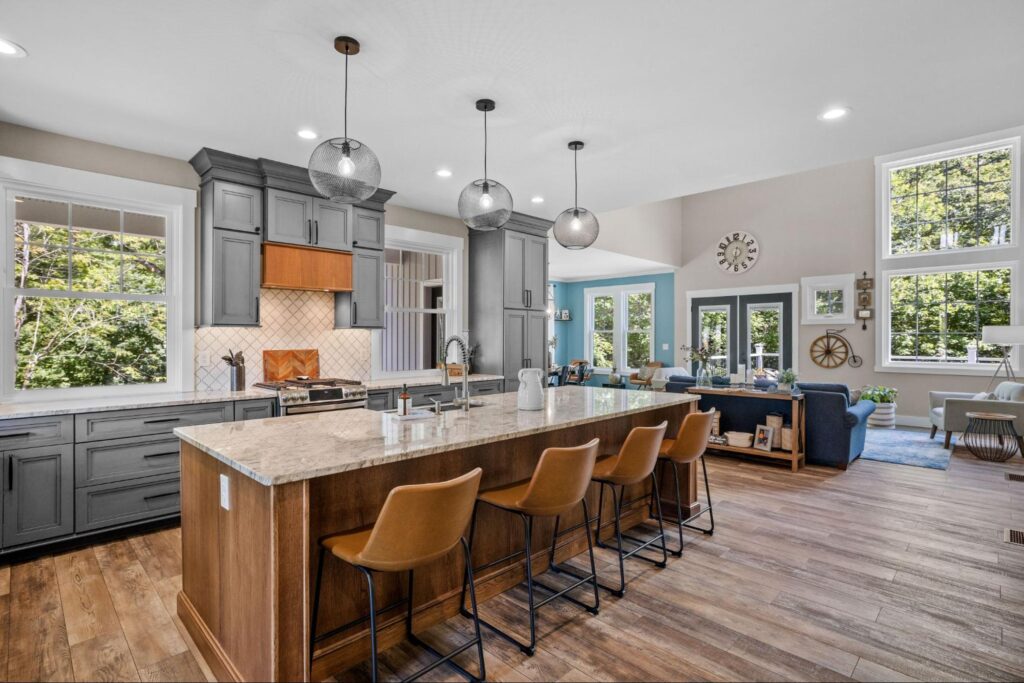Buying a model home can be an exciting opportunity for families and individuals looking for a move-in-ready property that already features premium touches. A model home is typically used by builders to highlight their craftsmanship, popular floor plan options, and updated design choices. These properties often come professionally staged, with stylish decor and upgraded finishes that help prospective buyers envision themselves in the space.
While model homes present numerous advantages—such as immediate occupancy and high-quality finishes—they also have potential drawbacks, including limited customization capacity and minor signs of wear from foot traffic. Understanding these pros and cons is vital to ensure you’re making a well-informed choice. As you weigh your options, it’s also invaluable to seek guidance from experienced builders who can walk you through each aspect of the purchase.
In this article, we’ll explore the potential benefits and drawbacks of purchasing a model home and how to determine if this home-buying route aligns with your unique needs.
Understanding Model Homes in the Home-Buying Process
Model homes are often the builder’s “showcase” property, featuring attractive layouts and top-of-the-line finishes that reflect the builder’s design philosophy. By touring one, you get a tangible sense of the craftsmanship and see how specific floor plan options turn out once completed. This immersion helps you envision how you’d live in the space—an experience that can’t be fully captured by looking at a blueprint or online images alone.
In most cases, model homes are sold “as-is.” That means what you see is what you get. There’s little to no opportunity to change finishes, revise the floor plan, or customize the overall layout. If having a personalized home is less important to you, or if you have a compressed timeline and prefer to skip the entire construction process, a model home could be the ideal choice.
Benefits of Buying a Model Home

Several factors make a model home especially attractive for certain buyers. Below are a few standout benefits.
Move-In Ready Convenience
One of the biggest perks of buying a model home is the ability to move right in. Unlike a new construction project that could take months (or even longer) to complete, a finished model is ready for you once the closing process is done. This is ideal if you’re juggling a relocation with a new job, accommodating a changing family size, or simply have a strict deadline to settle into your next residence.
Premium Upgrades and Features
Builders often design model homes to display their most enticing, up-to-date selections. You’ll likely enjoy eye-catching countertops, upscale flooring, modern fixtures, and other modern home features. In many cases, purchasing the model means that these pre-selected luxury upgrades are included in the overall price—sometimes at a more economical rate compared to the cost of adding each feature individually during a custom or semi-custom build. However, the cost-effectiveness of these upgrades can vary depending on the builder and local market conditions.
Demonstrated Quality of Craftsmanship
A model home represents the builder’s work at its best. You can get a direct sense of the materials, layout functionality, and construction integrity because the property serves as a real-life example of the final product. Each room is curated to demonstrate how the builder addresses natural light, traffic flow, storage needs, and other practical considerations.
Potential Cost Savings
Because model homes come with select high-end features already installed, you can often save on renovations or design costs after move-in. The price tag on a model home might be slightly higher compared to a base-model new build, but it often encompasses upgrades that you would otherwise pay for out of pocket later.
Established Neighborhood and Amenities
Model homes typically reside in communities with established roads, green spaces, and a suite of conveniences. You can evaluate the neighborhood in real time—everything from dedicated walking paths to excellent schools. For families prioritizing proximity to parks, safe sidewalks, and shopping, being able to see how the entire neighborhood operates day-to-day can be a significant advantage.
Drawbacks of Buying a Model Home
Despite their benefits, model homes aren’t for everyone. Here are a few potential downsides to keep in mind.
Minor Wear and Tear
Because a model home is used as a showpiece, it might have extra foot traffic. Over time, visitors touring the property can cause small scuffs or wear on flooring, walls, and fixtures. Typically, this wear is superficial and can be handled with minimal touch-ups, but be prepared for a property that isn’t entirely “untouched.”
Limited Customization
If personalization is paramount for you—such as setting specific tile patterns, handpicking cabinet styles, or altering room layouts—a model home might not be the right fit. It’s sold in its current state, and extensive modifications or structural changes can be costlier to implement once the home is already finished.
Resale Value Considerations
While a model home usually boasts upscale features, shifting design trends may affect its long-term appeal. Additionally, the foot traffic aspect—however managed—could factor into wear that accumulates over time. For more insight into how custom finishes and the overall condition can influence your future listing, check out these resale value considerations.
Competition and Bidding
Model homes can draw considerable interest. Because they’re available for immediate occupancy, prospective buyers who need housing right away may be quick to make an offer. In highly competitive markets, this can lead to a bidding environment that drives up the price. Before making an offer, ensure you have a clear budget and a financing plan to handle a potentially speedy or competitive negotiation.
How to Decide If a Model Home Is Right for You
Ultimately, your choice depends on your lifestyle, timeline, and desire for customization. Some helpful questions to ask yourself include:
- Do you need a move-in-ready home that cuts out the construction phase?
- Are you comfortable embracing the finishes and design choices already made by the builder?
- Is having minimal wear and tear a requirement, or are small cosmetic fixes acceptable?
- Is a quicker closing worth the trade-off of not personalizing every detail?
If “yes” to most of these, you might find a model home to be the perfect balance of practicality and luxury. If you foresee wanting a unique floor plan or specific design elements, a newly constructed home that you can tailor—rather than accept as-is—could be more aligned with your goals.


Real-World Model Home Scenarios
Selecting a model home can fulfill specific needs across various circumstances. Below are a few typical scenarios to illustrate how this option might deliver the right blend of convenience, affordability, and style.
- First-Time Homebuyers on a Schedule: A young family relocating due to job changes often has limited time to settle in before the next school term starts. A model home offers an expedited timeline—no extensive design or construction delay—while still delivering a modern and polished space.
- Retirees Downsizing: Couples transitioning from a large family home to a smaller residence may prioritize ease. A model home’s move-in readiness lessens the logistical stress that can come with downsizing, allowing retirees to focus on furnishing the new space and adapting to a more compact layout.
- Busy Professionals: For individuals who travel extensively or have demanding work schedules, the streamlined nature of a model home can be a huge advantage. Rather than making numerous design decisions, they can quickly finalize the purchase and move on with their daily routines.
- Investors Seeking a Showpiece: Some buyers look for a standout property to add to their real estate portfolio—possibly as a rental or future resale. Model homes often come with high-end touches that make them more appealing to potential renters or future buyers, helping the property stand out in a competitive market.
- Newly Married Couples Starting Out: For couples who want a simpler path to homeownership, selecting a model home can quickly provide them with an upgraded living space that accommodates future growth. They also benefit from a well-established neighborhood, supportive communities, and less time spent on design decisions, allowing them to focus on building their life together.
These real-world examples underscore that “one size fits all” rarely applies in housing decisions. Your personal circumstances—including budget, timeline, and how much you value customization—will guide whether a model home is a wise purchase.
Tips for Inspecting a Model Home Before Purchase

Conducting a thorough inspection helps you understand what you’re buying and identify any potential issues:
- Check for Cosmetic Flaws: Look for scuff marks on walls, light scratches on surfaces, or slight discolorations on flooring. These are often quick fixes but should be accounted for in your budget.
- Clarify Included Upgrades: Make sure you know exactly which premium features—like high-end appliances or upgraded cabinetry—are included in the sale.
- Evaluate Neighborhood Amenities: Walk around the community to see if it meets your day-to-day needs. Whether you want dinner options nearby or parks conducive to family outings, verifying those conveniences before purchase will help ensure satisfaction.
- Speak With the Builder: Don’t hesitate to ask about maintenance records or any improvements made during the time the home served as a model. Clear, factual information from the builder is essential to making a confident choice.
How Reinbrecht Homes Supports Home Buyers Considering Model Homes
Reinbrecht Homes aims to simplify and clarify the home-buying experience for each client, whether you’re leaning toward a model home or exploring other options.
Clear Communication and Transparency
The buying process can feel overwhelming, especially if you’re unsure about included finishes or minor wear on the property. Reinbrecht Homes prioritizes open communication, openly addressing any questions. You’ll have a clear understanding of what a model home includes—right down to the premium features, warranties, and neighborhood insights—empowering you to proceed with confidence.
Flexible Options for Diverse Needs
Though model homes are a consistent favorite for buyers seeking a quick move, Reinbrecht Homes also provides choices for those wanting more influence over design decisions. Besides its ready-to-purchase properties, there’s an emphasis on custom and semi-custom builds, so you’re never boxed into a single approach.
Buildertrend for Real-Time Updates
Reinbrecht Homes uses Buildertrend to keep you in the loop. Even if you decide on a model home, Buildertrend offers easy access to home details, scheduling, or relevant paperwork in real time. This tool is especially helpful if you have a busy lifestyle or are coordinating details from out of town.
Commitment to Quality
Quality construction is a core benchmark for Reinbrecht Homes. Whether you purchase a model home or design something fully custom, rigorous standards apply to each project. Get an in-depth look at how Reinbrecht Homes strives to ensure quality construction so you’ll have peace of mind about the long-term durability of your property.
Robust Warranty and Post-Purchase Support
Any home purchase is a major investment, and Reinbrecht Homes supports that investment with a home warranty program. If something unforeseen arises, their dedicated service team can address it, minimizing stress and interruptions to your daily routine.
Making the Right Home-Buying Choice for Your Lifestyle
Purchasing a model home can provide immediate comfort, luxury finishes, and an effortless transition to homeownership. For some individuals or families seeking a swift timeline and top-notch design elements, the convenience factor makes it an obvious choice. On the flip side, the inability to significantly personalize and the possibility of mild wear might be sticking points if you crave a more customized environment.
Comparing a model home to a custom or semi-custom approach is the best way to confirm which path suits your lifestyle. Reinbrecht Homes has cultivated a longstanding reputation in Southern Indiana and Eastern Illinois for helping clients evaluate diverse home-buying options, always emphasizing transparency and quality in each project.
When you’re ready to explore financing details—or simply want to learn more about making a Reinbrecht model home your own—contact our team for further guidance. Take the next step with confidence and discover how Reinbrecht Homes can help you find or build the perfect place to call home.

